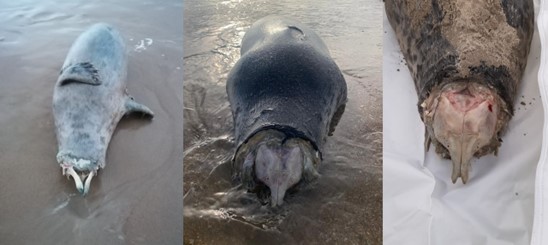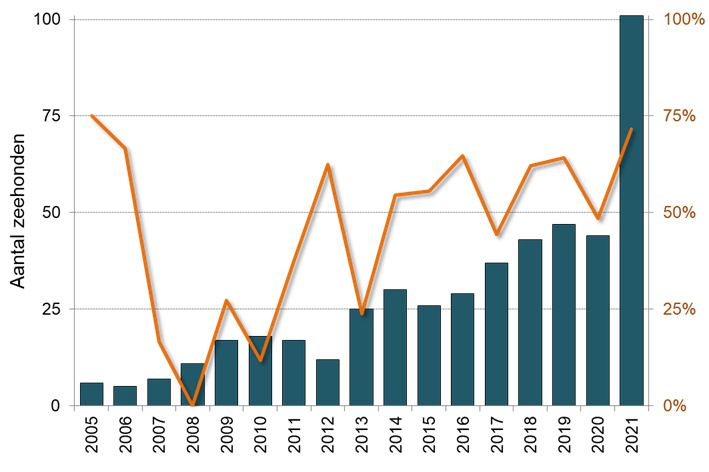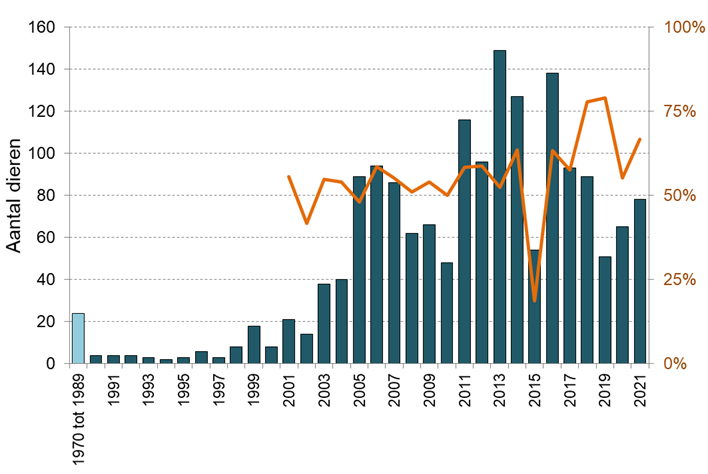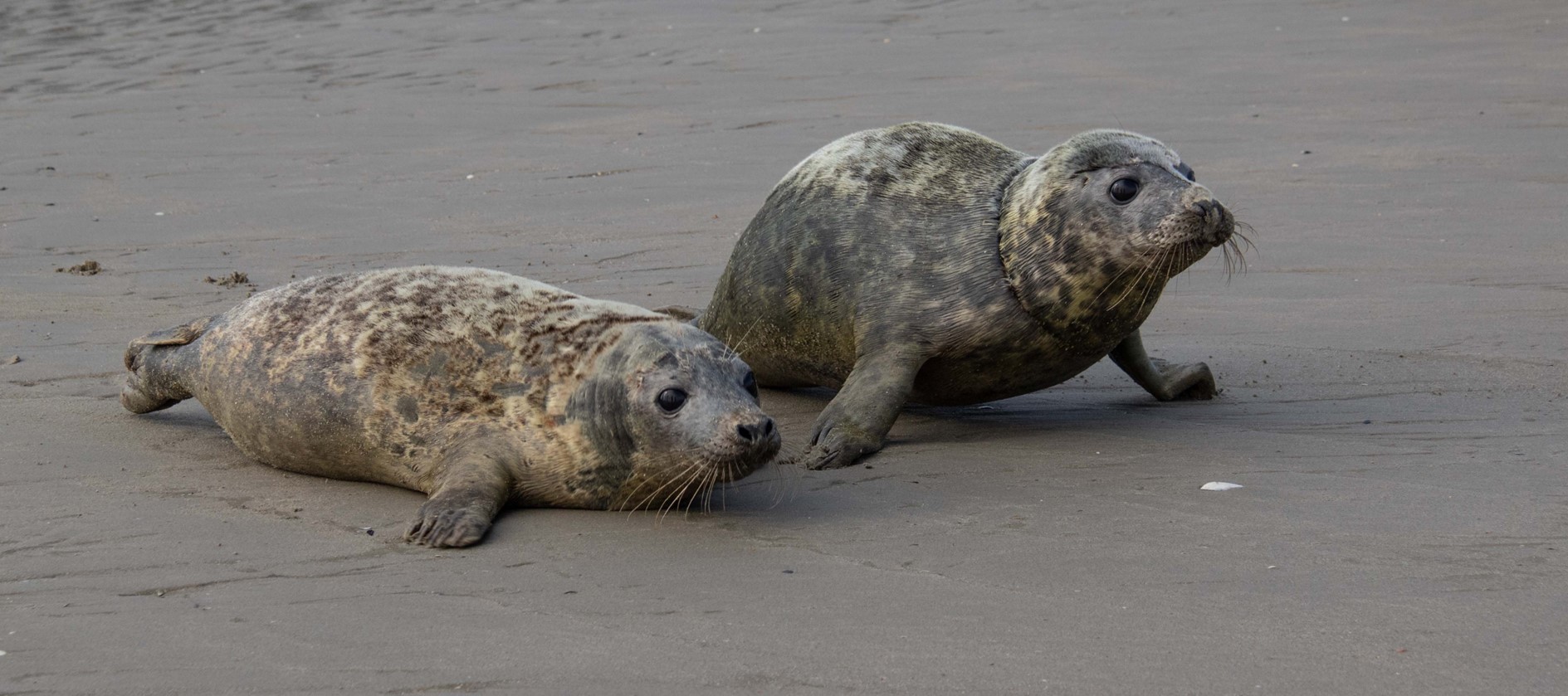In the new report ‘Strandings and sightings of marine mammals in Belgium in 2021’, the Royal Belgian Institute of Natural Sciences, SeaLife Blankenberge and the University of Liège compile the results of monitoring and scientific research on marine mammals in Belgium in 2021. The doubling of the number of seals washed ashore dead, often perished in fishing nets, was the most remarkable finding.
Which dead or dying marine mammals washed up on our beaches? Which causes of death could be indicated? What are the trends of marine mammals in Belgium? How many seals has Sealife taken in? These are the questions to which one can find the answers in the latest marine mammal report, which focuses on the results from 2021.

Many dead seals
In 2021, only harbour porpoises and seals stranded in Belgium. A dull year for marine mammal researchers after a spectacular 2020, when two Sowerby’s beaked whales and a Minke whale washed ashore? Certainly not. Indeed, the number of dead seals doubled to more than 100, compared to an almost constant number in the 2018-2020 period (44 on average). Determining the cause of death proved to be a real challenge. As many of the dead seals appeared to be ‘decapitated’, much commotion and speculation arose. In the end it turned out that many of the animals concerned had died in fishing nets. The proportion of Grey seals, which have claimed their place in the southern North Sea only more recently than the Harbour seals, has fluctuated between half and about 70% during the last 10 years.

Harbour porpoises
With 74 stranded Harbour porpoises, 2021 was a rather moderate year. In 10 of the years since 2005 there were more (in four years even more than 100), in the six other years less. The cause of death could be determined for 30 porpoises: 15 fell prey to Grey seals (which is a remarkable number), 12 died of infectious diseases or starvation and ‘only’ 3 drowned in fishing nets.

Four live Harbour porpoises also stranded, all of which unfortunately died soon after stranding. Aerial surveys showed almost 3,000 Harbour porpoises in our waters during June and September.

Rehabilitation of seals
Sealife Blankenberge took in eight Grey and 10 Common seals in 2021. Bite wounds (of unknown origin), injuries caused by the nylon rope of a fishing net, and other waste at sea (rubber ring), were at the basis of the need for rehabilitation. Six Grey seals and seven Harbour seals could be released in 2021. In contrast to the past, young Grey seals are now more often left lying on the beach: they become more numerous and they do not need our help most of the time.

Additional contributions
The annual report also devotes attention to the death of Grey seal Oscar. This very old seal spent his last years on our coast and in 2021 became the mascot of the voluntary seal guard and received a lot of press attention. The solitary Bottlenose dolphin, which has been turning up regularly in our waters for many years and often seeks out the company of divers, also makes an appearance in the report.
2021 marked the 75th anniversary of the International Whaling Commission. Whether there is a reason to bring out the champagne, you can read in an opinion piece.
All marine mammals are legally protected in Belgium. Monitoring of the populations and research into explanations for the observed trends, for which the Royal Belgian Institute of Natural Sciences was appointed as the responsible institute, is part of the implementation of the Royal Decree on the protection of species in marine areas under Belgian jurisdiction, whereby, among other things, the agreements made within the Coast Guard are followed. Research into the state of health and causes of death is also an obligation in international agreements, which moreover teaches us a lot about the state of the marine environment. However, the monitoring and scientific research on marine mammals are only possible thanks to the support of the local emergency and control services and the enthusiasm and willingness to report of many observers.
For information on recent sightings of marine mammals in Belgium and instructions on what to do when stranded, please visit the website marinemammals.be. The full report for 2021 (available in Dutch and French), as well as the older annual reports, can be consulted here.
